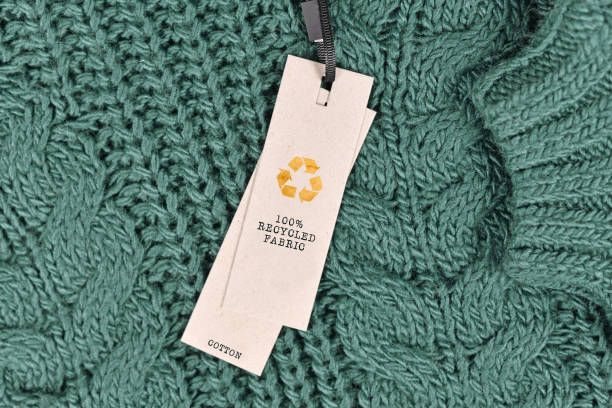In recent years, the fashion industry has faced increasing scrutiny for its environmental impact. This shift has led many to ask, is environmentally friendly clothes really a solution? Environmentally friendly clothes, also referred to as sustainable or eco-friendly clothing, aim to reduce harm to the planet while promoting ethical practices. In this article, we’ll explore what makes clothing environmentally friendly, why it’s essential, and how consumers can embrace sustainable fashion.
What Are Environmentally Friendly Clothes?
Environmentally friendly clothes are garments made with a focus on sustainability and minimizing environmental harm. They are designed and produced with practices that reduce waste, conserve resources, and respect both people and the planet. Key characteristics of environmentally friendly clothes include:
- Sustainable Materials:
- Organic Cotton: Grown without harmful pesticides or synthetic fertilizers.
- Recycled Polyester: Made from recycled plastic bottles, reducing landfill waste.
- Hemp and Linen: Natural fibers requiring minimal water and chemicals.
- Econyl and Recycled Nylon: Regenerated materials derived from discarded fishing nets and industrial waste.
- Eco-Friendly Production Processes:
- Low water usage.
- Reduced carbon emissions.
- Non-toxic dyes and finishes.
- Ethical Practices:
- Fair wages and safe working conditions for workers.
- Transparent supply chains that prioritize human rights.
Why Are Environmentally Friendly Clothes Important?
The traditional fashion industry is one of the largest polluters globally. The rise of fast fashion has exacerbated issues like resource depletion, pollution, and unethical labor practices. Here’s why environmentally friendly clothes matter:
- Reducing Environmental Impact:
- Lower Carbon Footprint: Eco-friendly clothes often use renewable energy and sustainable materials, reducing greenhouse gas emissions.
- Conserving Water: Fabrics like organic cotton and hemp use significantly less water than conventional materials.
- Minimizing Waste:
- The fashion industry generates enormous textile waste. Choosing recyclable or biodegradable clothes helps reduce this burden.
- Protecting Human Health:
- Conventional clothing production often involves toxic chemicals that harm workers and pollute ecosystems. Sustainable practices eliminate these risks.
- Promoting Ethical Labor:
- Many environmentally friendly brands ensure fair wages and safe working conditions, addressing exploitation in the industry.
Is Environmentally Friendly Clothes Better for Consumers?
Yes, environmentally friendly clothes offer several advantages for consumers:
- Durability: Sustainable clothes are typically made to last, reducing the need for frequent replacements.
- Healthier Choices: Natural fibers and non-toxic dyes are gentler on the skin, making them a better choice for sensitive individuals.
- Style and Versatility: Eco-friendly brands are now offering fashionable and versatile designs to cater to all tastes.
Challenges of Environmentally Friendly Clothes
While environmentally friendly clothes offer many benefits, they also come with challenges:
- Higher Costs:
Sustainable materials and ethical practices can result in higher prices. However, the long-term durability often offsets the initial investment. - Limited Availability:
Eco-friendly options may be less accessible, particularly in areas dominated by fast fashion retailers. - Greenwashing:
Some brands falsely claim to be sustainable. Consumers need to verify certifications like GOTS (Global Organic Textile Standard) or Fair Trade labels.
How to Choose Environmentally Friendly Clothes
Here are practical tips for finding truly sustainable clothing:
- Check the Material:
Opt for organic, recycled, or biodegradable fabrics. Avoid synthetic materials like conventional polyester unless it’s recycled. - Research Brands:
Look for brands that prioritize transparency and have certifications like Fair Trade, GOTS, or OEKO-TEX. - Shop Secondhand:
Buying pre-owned clothing reduces waste and extends the life of garments. - Repair and Recycle:
Instead of discarding old clothes, repair them or find recycling programs that repurpose textiles. - Capsule Wardrobe:
Build a minimalist wardrobe with versatile pieces to reduce overconsumption.
Popular Environmentally Friendly Clothing Brands
Several brands have made a name for themselves in sustainable fashion:
- Patagonia: Known for its use of recycled materials and commitment to environmental activism.
- Eileen Fisher: Focuses on organic and sustainable fabrics.
- Reformation: Combines stylish designs with eco-friendly practices.
- Everlane: Promotes transparency in its supply chain.
The Future of Sustainable Fashion
As consumer awareness grows, the demand for environmentally friendly clothes is expected to rise. Innovations like biofabrication (creating fabrics in labs) and circular fashion (designing clothes for reuse and recycling) are set to transform the industry. Governments and organizations are also pushing for stricter regulations to hold brands accountable for their environmental impact.
Conclusion
Is environmentally friendly clothes a viable solution to the fashion industry’s problems? Absolutely. By choosing sustainable materials, ethical production practices, and mindful consumption habits, we can significantly reduce the environmental footprint of our wardrobes. While challenges like cost and accessibility exist, the benefits of environmentally friendly clothes far outweigh the drawbacks.
Consumers play a crucial role in driving change. By supporting sustainable brands, rethinking consumption patterns, and spreading awareness, we can contribute to a greener, more ethical fashion industry. The shift towards environmentally friendly clothing isn’t just a trend—it’s a necessity for a healthier planet.
